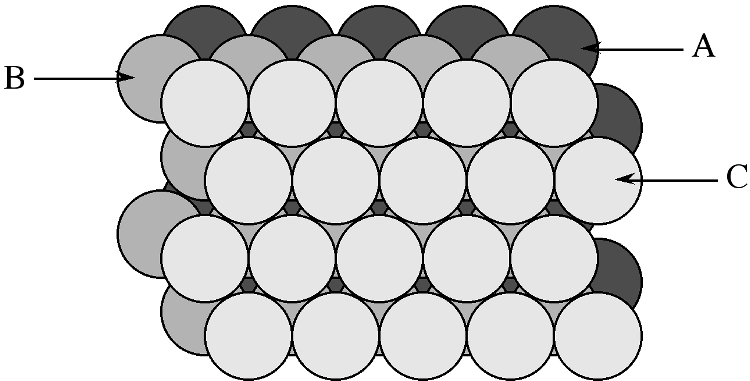If you consider the Barlow lattices, these are obtained by taking
planar hexagonal packings of spheres, and nesting them together
in layers. For each layer, there are two possible ways of placing
the layer above it:


(source: cnx.org)
Let's normalize the Barlow lattices to have one common layer (the A-layer). The heights of the (centers of spheres of the) other layers will be multiples of the height of a tetrahedron, so are the same for each Barlow lattice. The centers of the vertices of the next layer above have two possibilities, one with projection given by the B-circles, and one given by the C-circles (these are symmetric under a transformation preserving A-circles, so let's assume the next layer is the B-circles). Then the next layer can have projection either the C-circles or the A-circles (the diagram corresponds to the face-centered cubic lattice, so the pattern there is ABCABC...). Thus, we see that for any Barlow lattice D, the differences $D-D$ will be a subset of the superposition of 3 face-centered cubic lattices which have the A-,B-,C-layers at each level, and thus will be a discrete set. So it will be a Meyer set (I'm going by the definition of a Meyer setdefinition of a Meyer set as a discrete set $M$ such that $M-M$ is also Delone).
